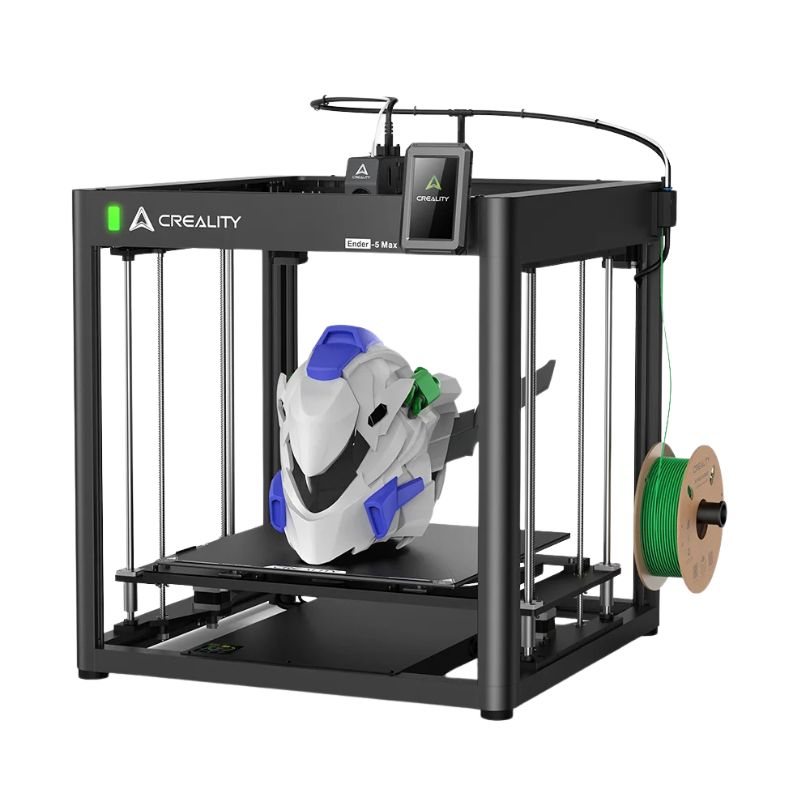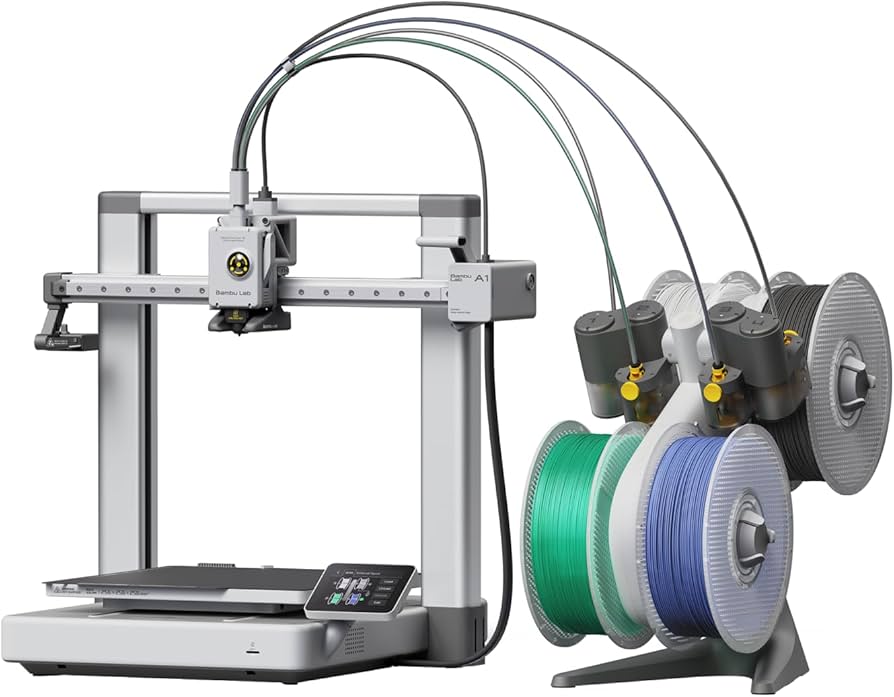Compare Ender 5 Max vs A1
Comparison between the best 3D printers
Choose the best 3D printer at the best price. The cheapest 3D printers are here.
Buy a 3D printer here with 3D Fila.
 |
 |
|
| Model | Ender 5 Max |
A1[BUY A1] |
| Printing Material | Filament | Filament |
| Buy Filament for Creality Ender 5 Max | Buy Filament forBambu Lab A1 | |
| Estimated price | $769,00 | $700,00 |
| Manufacturer | Creality | Bambu Lab |
| Release Year | 2025 | 2023 |
| Print Volume [mm] | 400x400x400 | 256x256x256 |
| Printer Size [mm] | 649x721x850 | 385x410x430 |
| Weight [kg] | 25,9 | 8,3 |
| Power Loss Recovery | YES | YES |
| Enclosed printer | NO | NO |
| Bed Leveling | Automatic | Automatic |
| Filament End Sensor | YES | YES |
| Bed type | Heated | Heated |
| Power supply system | Direct Drive | Direct Drive |
| Standard nozzle | 0,4 | 0,4 |
| Maximum Nozzle Temperature [°C] | 300 | 300 |
| Maximum Bed Temperature [°C] | 100 | 100 |
| Maximum printing speed [mm/s] | 700 | 500 |
| Filament holder | YES | YES |
| Camera for supervision | YES | YES |
| Recommended filaments | Hyper PLA/PLA/PETG/TPU95A/ABS/ASA/PLA-CF/PA/PLA-Silk | PLA, PETG, TPU, PVA |
| Recommended slicers | Creality Print 5.1 | SuperSlicer, PrusaSlicer, Cura, OrcaSlicer |
| Maximum Resolution [mm] | 0,1 | 0,1 |
| Processor | ||
| Display | Touchscreen 4,3'' | Touchscreen 3,5 |
| Power Supply | 1250 W | 350 W |
| Connectivity | USB, Wifi | Wi-Fi, Bambu-Bus, Cartão Micro SD |
| Operating systems | Windows | Windows, Linux, Macbook |
| Date of registration in the system | 2025-02-18 | 2024-07-17 |
| Release date | 2025 | 2023 |
| Extra features | The Ender 5 Max by Creality features a 400 x 400 x 400 mm build volume, a rigid aluminum frame, and 36-point auto bed leveling. With speeds up to 700 mm/s, it boasts a hardened dual-gear extruder and a 1000W heated bed, reaching 80°C in just 200 seconds. It supports remote management via WLAN, a tri-color status indicator, and quiet operation, making it ideal for high-precision, high-productivity 3D printing. | The BambuLab A1 printer features fully automatic calibration, multi-color printing with the AMS system, active flow rate compensation, quick nozzle change with a clip, active motor noise cancellation, a build volume of 256x256x256 mm³, a maximum extruder temperature of 300°C, and a heated bed of up to 100°C. In addition, it has high precision, a machine health management system and an intuitive 3.5-inch touchscreen interface. |
| Support for multiple colors and materials (AMS and CFS) | NO | YES |
Notes * |
||
| Cost-benefit | 7 / 10 | 7 / 10 |
| Hardware | 5 / 10 | 4.8 / 10 |
| Tela | . | . |
| Print volume | 4 / 10 | 4 / 10 |
| Performance | 6 / 10 | 4 / 10 |
| [BUY A1] |
Conclusion |
| In evaluating the Creality Ender 5 Max and the Bambu Lab A1 3D printers, several factors stand out, notably in terms of price, print volume, and features. The **Ender 5 Max** offers a significantly larger print volume, allowing for bigger projects with its 400x400x400 mm capability. This may be particularly beneficial for users who require larger prints or wish to minimize the number of parts needed for assembly. Additionally, it boasts higher printing speeds up to 700 mm/s and a robust power supply that enhances its performance, especially for demanding printing tasks. On the other hand, the **Bambu Lab A1** has been released more recently and features advanced calibration and operational technologies such as automatic calibration and active flow rate compensation. While its print volume is smaller at 256x256x256 mm, the A1 is more suited for detailed prints that may require color precision and multiple filament types, thanks to its support for multi-color printing through the AMS system. Both printers have similar features including automatic bed leveling, power loss recovery, and heated beds, but they cater to slightly different user needs. The A1, with its more compact build and advanced tech offerings, may appeal to hobbyists seeking intuitive features and versatility with materials, while the Ender 5 Max would likely attract those needing larger build volumes and greater speed without the necessity for multi-color support. In terms of cost-efficiency combined with performance and feature set, both printers receive a similar rating, indicating that the best choice largely depends on the specific requirements of the user. The decision boils down to whether the user values scale and speed (Ender 5 Max) or advanced features and material versatility (Bambu Lab A1). Ultimately, both machines stand as excellent candidates in their respective categories, offering commendable quality at competitive prices. |

